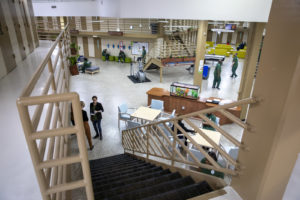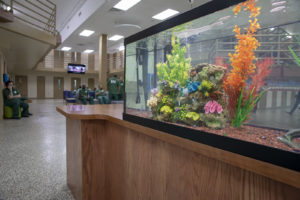
The Scandinavian countries continually receive international attention for combining “exceptional” conditions of confinement with recidivism rates that are among the lowest in the world . Although the idea of Scandinavian (or Nordic) penal exceptionalism is highly contested – not least from within Scandinavian criminology itself – many countries still glance to the north for ways to reform their criminal justice systems. In corrections, for instance, there are ongoing collaborations between the Norwegian Correctional Service and prison and probation services in several Eastern-European countries, as well as with multiple states in the US. Interestingly, these and other collaborations have been subject to little empirical and academic scrutiny, and the extent to which “penal transplants” derived from the Scandinavian models may thrive outside their respective social and institutional contexts remains poorly understood.
The Scandinavian Prison Project
The Scandinavian Prison Project, which I co-manage with Jordan Hyatt (Drexel University), seeks to empirically assess what happens when certain practices and principles from Scandinavian corrections are implemented in an American prison setting. The project focuses on an ongoing collaboration between the Pennsylvania Department of Corrections (PA DOC), the Norwegian Correctional Service (Kriminalomsorgen), the Swedish Prison and Probation Service (Krimnalvården), and the Danish Prison and Probation Service (Kriminalforsorgen). In 2019, a group of officers and managers from State Correctional Institution (SCI) Chester, a medium-security facility located just outside of Philadelphia, PA, spent three weeks visiting and working in several facilities across Scandinavia. In 2022, they returned for a shorter follow-up visit. Though delayed by the pandemic, this bottom-up initiative has focused its effort and knowledge on developing a single housing unit at SCI Chester, which has been named “Little Scandinavia.”

The “Little Scandinavia” unit differs from the regular conditions of confinement at SCI Chester in many important respects. With single cells, custom furniture, a communal kitchen, redesigned common areas, and an outdoor green space, the unit looks unlike any other. Moreover, the officers on the project have, in addition to travelling to Scandinavia to work alongside peer mentors, received training in conflict resolution, suicide prevention and other relevant skills. The uniquely low ratio of trained staff to incarcerated men is intended to facilitate positive interactions and encourage meaningful communication between the people living and working on the unit. In March of 2020, six men sentenced to life in prison moved to the unit for what was intended to be a short pilot period. Then, an entire pandemic later, a group of 29 men, selected by lottery, moved on to the housing unit in early May of 2022. 29 more men will move in the coming months, filling the unit to its maximum capacity of 64.
Lottery as part of the research design
The research team, which includes both qualitative and quantitative researchers from Norway and the US, has followed the project from the very beginning. In 2019 and 2022, we collected interview, survey and observational data both before, during and after the study visits to Scandinavia to better understand the experiential learning process as it unfolded (see, e.g., Hyatt et al. 2021; Horowitz et al., 2021). Now that the unit has officially opened, we implemented a randomized evaluation to better understand the impact of the described changes on both staff and incarcerated people. Subject to very limited restrictions, the unit mirrors the general population of the prison; the men have diverse backgrounds both in terms of sociodemographics, conditions of confinement, and criminal histories.

Importantly, we chose to use a lottery as opposed to the more common (and to some more intuitive) approach of only allowing the most motivated or best-behaved incarcerated people to move to the unit for two main reasons. First, from an ethical perspective, we believe it is more fair and transparent to the incarcerated men to allow all—irrespective of their past behavior and current standing with staff or management—an opportunity to take part in new, potentially beneficial programs in the prison if they wish to do so. Second, using a lottery means that we can meaningfully compare the group of men housed at “Little Scandinavia” to those in the general population. Having two groups that are as similar as possible—with the exception of their conditions of confinement—is important when seeking to develop evidence on the direct impact of the unit on both in-prison and out-prison outcomes, including recidivism and other measures of community reintegration. The research team will also focus our efforts in the months and years to come on following the staff who work on the unit. In particular, we are interested in learning more about how the changing working environment impacts their stress levels, motivation, and professional identities.
These research efforts are supported by Arnold Ventures and the Nordic Research Council for Criminology, as well as our respective universities.
In addition to our efforts to study this project from an academic perspective, SVT (the Swedish public broadcaster) is in the process of creating an independent documentary series about the changes at SCI Chester. Trailer for this documentary (link).
